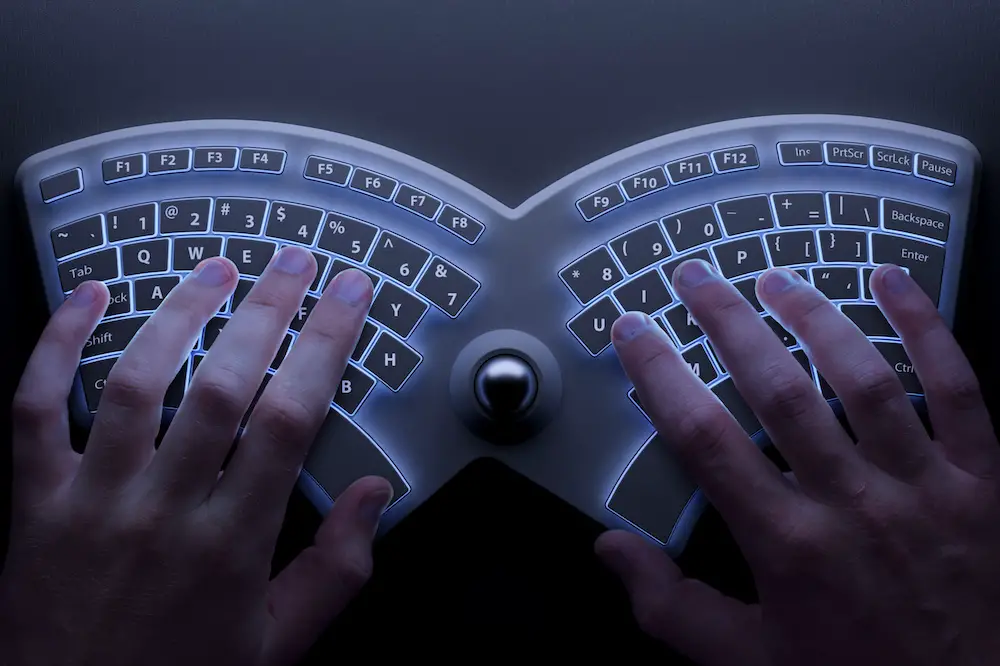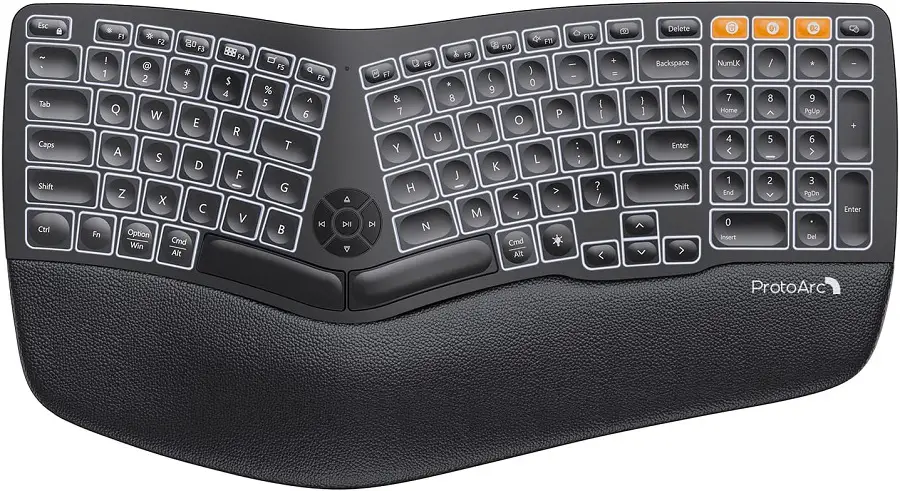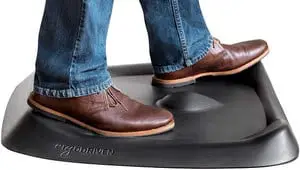The keyboard is among the most used computer peripherals for work, school, or gaming, but it is also often the most ignored.
Some of us don’t bother replacing the keyboard that came with the computer set, or we simply purchase any model we find.
However, keyboards contribute significantly to improved comfort, so you must spend enough time and effort searching for one.
Among the many choices today, experts and users highly recommend ergonomic keyboards.
We understand that some of you might not be familiar with them, so it’s common to hear the question, “What is an ergonomic keyboard?”
Thus, let us discuss in detail what an ergonomic keyboard is and its many types.
What Is an Ergonomic Keyboard?
Aptly named, ergonomic keyboards have designs that fit the user, not the other way around.
That’s because they eliminate the need for you to make frequent bodily adjustments to ensure you achieve proper hand position or ergonomics for typing.
It means that your wrist won’t be bent backward, inward, downward, and upward and rotated downward and upward when using them.
These keyboards lower your risk of hand injuries, such as carpal tunnel syndrome and RSI, and will enhance hand and wrist comfort instead.
Most ergonomic keyboard options also fit a wide range of body types, unlike standard keyboards that only work for a small percentage of bodies.
That’s why this type of keyboard ensures your whole body is in its natural position, leading to less shoulder, neck, and back strains and pain.
Ergonomic Keyboard Options
From our answer to the question, “What is an ergonomic keyboard?” we can already say that ergonomic keyboard makers understand that every user is different.
Thus, they ensured each one could find an ergo keyboard that would work best for their specific needs.
Each of these options differs in terms of form factor, but they’re all designed with, of course, ergonomics in mind.
That said, the following are the most common and popular types you’ll find in the market today:
Split Keyboards
Ergonomic split keyboards have a layout and design that will help position each of your hands in the corresponding group of keys when you type.
This feature will prevent you from moving your left hand towards the “right-hand” keys and vice versa.
This feature is especially important for those who still haven’t mastered the touch typing technique or the proper positioning of fingers on the keyboard.
Thus, this keyboard will also help you achieve proper wrist alignment, leading to a fluid typing motion.
The best thing about this keyboard is it’s compatible with both roller and standard mouse and most, if not all, operating systems.

Additionally, split keyboards have two subtypes, namely:
- Unibody Design
At first glance, unibody models may look similar to the regular, flat keyboard.
However, when you look closely, the keys are grouped in two sections angled away from each other.
There’s also a space between each section that creates an upside-down triangle because of how the keys are positioned in each area.
Some unibody models also have a built-in palm rest for better user comfort.
- Split Design
Staying true to its name, this has a pronounced split design as you can literally physically split it into two keyboard halves.
This design is perfect for individuals with big arms or broad chests since they can position each of the keyboard halves at a comfortable distance.
No longer will you need to squish your elbows or slouch just so your fingers can reach the keys you need to use.
You can even place your mouse in the middle of the two compact keyboards, so you don’t have to reach too far.
However, remember that they don’t usually come with number keys, so you might need to purchase a number pad separately.
Contoured Keyboards
The next classification of keyboards with ergonomic features is the contoured or concave keyboard.
They have a signature curved, wave-like shape because of the slight slope or slight peak in the middle.
Aptly named, it has two depressed sections positioned at shoulder width, each with its corresponding group of keys.
This design feature helps reduce wrist and arm movement and prevents too much stretching of the finger and hand when you type.
All these concave keyboard features ensure you’ll have a more comfortable computing experience even for a more extended period of time.
One drawback to note is that they’re generally not compatible with roller-type standard and ergonomic mice.
Tented or Angled Keyboards
Some might confuse this with the split keyboard because it also comes in two keyboard halves.
However, you’ll notice that it has a tenting angle or each of the keyboard halves tilts upward in the area where they meet.
The tenting angle will keep your hand and wrist in their natural resting position but with your index finger positioned higher than your pinky finger.
It will also keep your forearm in its neutral position to prevent them from rotating too much.
With the angled split keyboard, not only can you position the halves at a distance comfortable for you.
You can also adjust the tenting angle.
Since you’ll most likely need some time to get used to the angled split keyboard, we suggest you start with the lowest tenting angle.
Adjust it to a higher angle once you get used to the layout.
Continue doing so until you reach the optimal (the highest) tenting angle to type comfortably for hours.
Tenkeyless Keyboards
The name of this keyboard actually refers to the number keys, which means you won’t find them in their typical location on a flat keyboard.
Instead, they’re on top of the letter keys to allow you to move your mouse closer to your keyboard.
These keyboards can also be any of the first three ergonomic models we discussed: unibody split, angled, or contoured.
Thumb Cluster Keyboards
Thumb cluster keyboards are split into two and have a nonstandard layout of keys.
For instance, another group of keys, such as Windows, ALT, and CTRL, replaces the space bar.
Some thumb clusters even allow you to customize this keyboard part so that you can create a shortcut for your most used key functions.
However, with this unusual design and layout, expect that you would need extra learning time, longer than the other types, before you get comfortable using the keyboard.
Special Types of Ergonomic Keyboards
Definitely, you can also find less-popular keyboards with an ergonomic design.
One is the handheld type, which is perfect for gamers since they have a console-like design.
Another is an ergonomic keyboard with a trackball or trackpad that functions as your mouse, which means you have a keyboard and mouse in one!
A Better Understanding of the Ergonomic Keyboard
If we have to sum up what an ergonomic keyboard is, it’s a computer accessory designed more for comfort rather than style. It may cost more than using the keyboard that came with your computer, but the benefits are with it.
Of course, we’re not saying that you won’t be able to find cool-looking models or they’re unpleasing to the eyes.
It’s just that most of them, such as the thumb cluster, have weird-looking designs and layouts.
Nonetheless, these keyboards will make your typing experience more efficient and intuitive, leading to better efficiency and productivity once you get used to them.
Don’t forget to pair your ergonomic keyboard with ergonomically designed mice and mouse pads for a better boost in comfort and injury prevention.

Sources
- Quora
- Pascarelli EF, Kella JJ. Soft-tissue injuries related to use of the computer keyboard. A clinical study of 53 severely injured persons. J Occup Med. 1993 May;35(5):522-32. PMID: 8515325.







